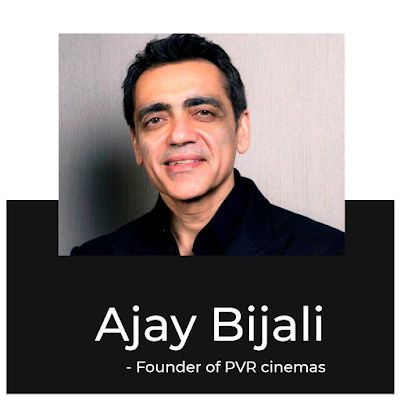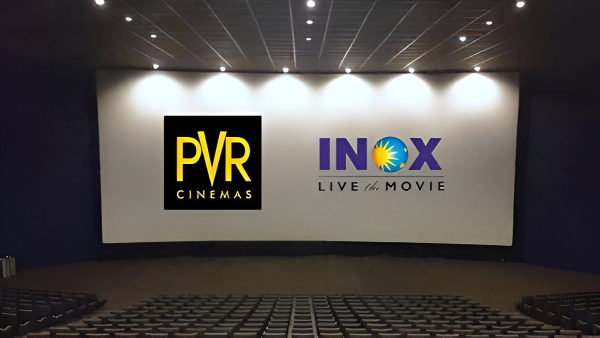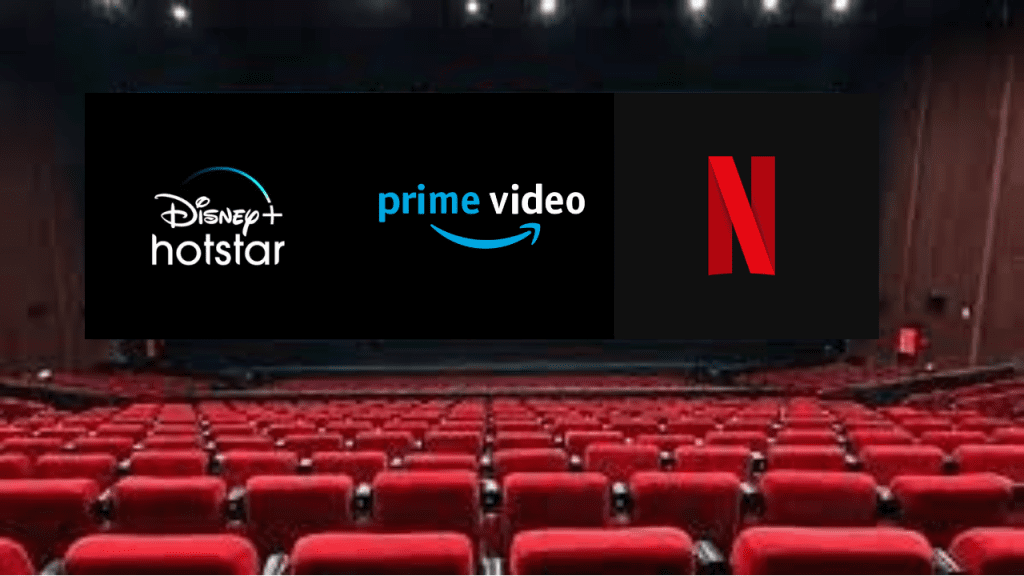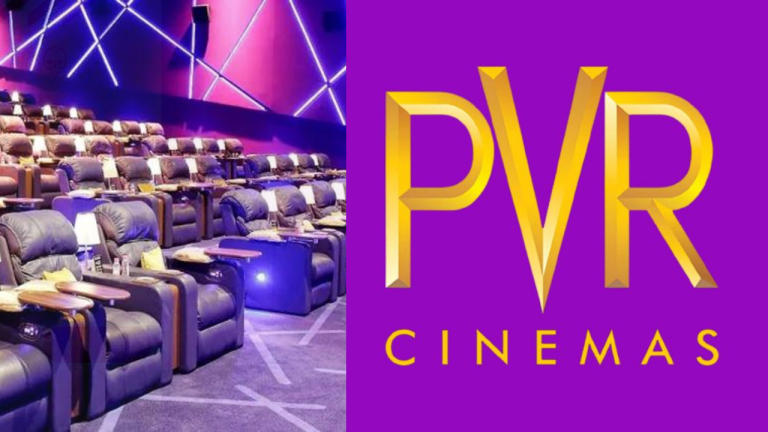In a world of captivating movies and immersive experiences, the entertainment industry has seen a remarkable transformation over the years, thanks to technological advancements. But today, let’s turn the spotlight on the man who played a pivotal role in redefining the Indian cinema experience – Ajay Bijli, the visionary behind the iconic PVR Cinemas.
A Fire of Resilience:
Ajay’s journey is nothing short of a rollercoaster ride. At the age of 22, he stepped into his father’s transportation business, the Amritsar Transport Company. However, his life took a tragic turn in 1992 when he lost his father. As he was dealing with this loss, a devastating fire razed down his business to the ground, leaving him at a crossroads.
A Cinematic Love Affair:

It was during this challenging period that Ajay faced a life-altering decision: to continue the transportation business or take charge of the family-owned cinema hall, “Priya” in Vasant Vihar, Delhi. Driven by his passion for cinema, he chose the latter, marking the beginning of an exciting journey.
Redefining Movie Experiences:
With a penchant for innovation, the first thing Ajay did at Priya was to introduce Dolby Sound Systems, transforming the cinema’s audio experience. He also added a touch of vibrancy with a fresh coat of pink paint, spruced up the facilities, and provided uniforms for the staff. Though Priya couldn’t premiere major blockbusters, Ajay’s focus was on creating an unparalleled movie-going experience.
The Birth of PVR:
The results were astonishing as Priya’s popularity soared. Not only did it become a local favorite, but it also attracted renowned brands like McDonald’s, Archie’s, and Nirula’s, making it a milestone in Indian cinema history. As the demand continued to surge, Ajay knew it was time to expand. However, finances posed a challenge.
In a bold move, he entered a 60:40 Joint Venture with Australia’s Village Roadshows in 1995, giving birth to “Priya Village Roadshows” or PVR.
The Multiplex Revolution:
In 1997, PVR introduced India’s first multiplex cinema in Saket, Delhi, offering a groundbreaking concept of four cinemas under one roof with 24 shows daily. This idea became a sensation, prompting PVR to add two more screens in Delhi. The success was evident as PVR rapidly expanded to become a dominant player in the Indian cinema landscape.
Trials and Triumphs:
By the year 2000, PVR was operating 12 screens, with projects worth over 100 crores across 50 screens in the pipeline. Ajay was well on his way to becoming the Cinema Man of India. However, the 9/11 terrorist attacks took a toll on Village Roadshows, leading to their withdrawal from the joint venture. Ajay found himself back at square one.
After numerous meetings and relentless determination, Ajay secured a crucial funding of 80 crores from ICICI Ventures in 2003, a turning point in PVR’s history. PVR expanded its reach, reaching cities like Delhi, Mumbai, Bangalore, Hyderabad, and Chennai. Ajay successfully closed the 100-crore projects and set the stage for PVR to go public.
The Grand Finale:
In 2006, PVR made its way to the stock market with an IPO that secured a staggering 250 crores, marking the company’s trajectory towards becoming an entertainment behemoth. PVR’s influence continued to grow, with the acquisition of Cinemax for 530 crores in 2012 and a merger with the global giant INOX.

Today, PVR operates an astounding 1650 screens across 70+ cities and boasts a valuation of a whopping 17,000 crores. Ajay Bijli and his family have not only built an entertainment empire but also made over 1900 crores from this monumental journey. He may have received numerous awards, but there’s one title that stands out above the rest – “The Cinema Man of India.“
How technology has played a vital role in the success of PVR ?
Technology has undeniably played a pivotal role in the remarkable success of PVR, transforming it from a single-screen cinema to a 17,000 crore multiplex cinema chain. Here are some key ways in which technology has been a driving force behind PVR’s triumph, as highlighted in the article:
- Dolby Sound Systems: One of the first steps Ajay Bijli took when he entered the cinema business was to install Dolby Sound Systems at Priya. This move revolutionized the audio experience for moviegoers, immersing them in the world of cinema. It was a prime example of how technology could enhance the quality of entertainment and set PVR apart from its competitors.
- Multiplex Cinemas: PVR’s introduction of the multiplex concept was a game-changer in the Indian cinema industry. This innovation was made possible by advancements in construction technology and design, allowing multiple screens to be built under a single roof with state-of-the-art projection and sound systems. It significantly expanded the choices available to moviegoers and added convenience, all enabled by technology.
- Digital Projection: PVR, like many modern cinemas, relies on digital projection technology. This transition from traditional film projectors to digital projectors has not only improved the quality of visuals but also simplified the distribution of movies. It allows for a wider range of content, including 3D and 4K, enhancing the overall cinematic experience.
- Online Ticket Booking and Mobile Apps: PVR’s online booking system and mobile apps have made it convenient for customers to purchase tickets, choose seats, and access information about movie timings and offerings. This technological advancement has streamlined the ticketing process, making it more user-friendly and efficient.
- Cinema Management Systems: Behind the scenes, PVR utilizes advanced cinema management systems to handle scheduling, showtimes, and operations efficiently. These systems help in optimizing resource utilization and enhancing the overall customer experience.
- Digital Marketing and Engagement: PVR leverages technology for digital marketing and customer engagement. Through social media, email marketing, and mobile apps, they reach out to a broader audience, provide special offers, and keep moviegoers informed about upcoming releases. This digital presence and engagement enhance brand loyalty and attract more customers.
- Innovative Concessions: Technology has been instrumental in diversifying and upgrading concessions. From digital menu boards to automated vending machines and mobile payment options, PVR has embraced technology to offer a seamless and modern concession experience.
- Diverse Content Offerings: PVR’s ability to showcase a wide range of content, including live events, concerts, and alternative content like sports and cultural events, is facilitated by technological capabilities such as satellite feeds and digital transmission.
- Data Analytics: Technology allows PVR to collect and analyze customer data, preferences, and behaviors. This data-driven approach enables them to tailor their offerings, marketing strategies, and customer experiences to better meet the demands of their audience.
In summary, technology has been the driving force that has propelled PVR from its humble beginnings to its current status as a cinema giant. The integration of advanced audio-visual technology, online ticketing, digital projection, and data-driven decision-making has not only improved the movie-watching experience but has also transformed PVR into a 17,000 crore multiplex cinema chain. Ajay Bijli’s keen understanding of the importance of technology in the entertainment industry has been a key factor in PVR’s success.
The future of cinematic experience & how technology can disrupt this industry !
The future of the cinematic experience is poised for exciting and transformative changes, largely driven by technology. Ajay Bijli’s journey with PVR serves as a precursor to the innovations that are yet to come, setting the stage for a more immersive, convenient, and personalized movie-watching experience. Here’s how technology can further disrupt the industry:
- Immersive Technologies: Virtual Reality (VR) and Augmented Reality (AR) are already making their way into the cinematic world. With VR headsets, moviegoers can step into the world of their favorite films, becoming active participants in the story. Imagine watching a superhero movie and actually feeling like you’re flying alongside the hero. This immersive technology can provide an entirely new level of engagement and entertainment.
- Enhanced Audio-Visual Experiences: Technology will continue to advance the quality of audio and visuals in cinemas. High Dynamic Range (HDR), 4K, and even 8K projections are becoming standard, offering more lifelike and vibrant imagery. Similarly, advancements in sound technology, like object-based audio, can make audiences feel like they’re right in the middle of the action.
- Personalized Content: With the help of AI and big data, cinemas can analyze individual preferences and recommend movies tailored to a viewer’s taste. This personalization can extend beyond film selection to seat preferences, concessions, and even movie start times.
- Seamless Ticketing and Concessions: Mobile technology is already streamlining the ticketing process, but it can go further. Imagine a cinema that uses facial recognition for ticketing, allowing you to enter without needing a physical ticket. Mobile apps can also be used to pre-order concessions, making the process smoother and quicker.
- Dynamic Pricing: Technology can enable dynamic pricing based on demand. Just as airlines adjust ticket prices based on seat availability, cinemas can optimize ticket prices for popular showtimes or movies. This could make movies more accessible during off-peak times and ensure a more efficient use of resources.
- Interactive Storytelling: With the growth of interactive media, cinemas may experiment with choose-your-own-adventure-style movies. Audiences could collectively decide the plot’s direction, creating a unique viewing experience each time.
- Streaming Integration: The line between traditional cinemas and streaming services is blurring. Theatrical releases could happen simultaneously with streaming premieres, allowing viewers to choose where and how they want to watch a new film. This can increase flexibility and access for audiences.
- Sustainability: Technology can help cinemas become more eco-friendly. LED lighting, energy-efficient projection systems, and digital distribution reduce the environmental impact of cinemas. Additionally, innovative waste management and recycling solutions can be implemented.
- Social Experiences: Technology can enhance the social aspect of going to the movies. Interactive apps can allow audiences to engage with the film in real-time, discuss plot twists, and share their reactions with friends, even if they’re not in the same physical location.
- Global Collaboration: Cinema chains, like PVR, can expand internationally and collaborate with filmmakers, studios, and other entertainment companies to bring diverse content and experiences to audiences worldwide. Technology makes it easier to forge global partnerships.
In conclusion, the future of the cinematic experience is a dynamic landscape, enriched by technological advancements. Ajay Bijli’s journey with PVR is a testament to the potential for innovation and adaptation in the entertainment industry. As technology continues to disrupt and redefine the sector, moviegoers can look forward to more immersive, convenient, and personalized cinematic experiences.
Let’s debate the scope of recent ditigal OTT experience with cinema hall experience in future!

The debate over the scope of the digital Over-The-Top (OTT) experience compared to the traditional cinema hall experience in the future is a complex and multifaceted one, as both offer unique advantages and face distinct challenges. Let’s explore the arguments for each side:
Advantages of the Digital OTT Experience:
- Convenience: One of the most significant advantages of OTT platforms is the convenience they offer. Audiences can watch content from the comfort of their homes, at any time that suits them. This convenience extends to the ability to pause, rewind, or fast forward through content, providing a personalized viewing experience.
- Cost-Effective: OTT platforms often provide a more cost-effective way to access a vast library of content. A monthly subscription can grant access to a plethora of movies and TV shows, saving viewers money on individual movie tickets and concessions.
- Diverse Content: OTT platforms have opened the door to a wide array of content, including independent films, international movies, and niche genres that may not receive wide theatrical releases. This diversity caters to a broader range of tastes and preferences.
- Global Accessibility: OTT platforms are not bound by geographical limitations. Viewers can access content from around the world, offering a global cinematic experience. It’s an excellent way to explore different cultures and perspectives through film.
- Original Content: Streaming platforms are investing heavily in producing high-quality original content. This has attracted top talent in the industry and led to the creation of critically acclaimed series and movies that rival traditional cinema productions.
Advantages of the Cinema Hall Experience:
- Immersive Experience: Cinemas provide a truly immersive experience with larger-than-life screens, high-quality sound systems, and state-of-the-art projection technology. The sensory impact of a theater can’t be replicated at home.
- Community and Social Interaction: Going to the movies has always been a social activity. Cinemas offer the opportunity to share the experience with friends or family, and even with strangers. It’s a collective event that enhances the emotional impact of a film.
- Release Timing: Cinemas typically have exclusive rights to new releases, allowing movie studios to maximize their box office revenue. Many viewers still prefer to watch big, highly anticipated movies on the big screen as soon as they are released.
- Special Formats: Cinemas offer special formats like 3D, IMAX, and 4D, which take the cinematic experience to a whole new level. These formats are not easily replicable in a home theater setup.
- Escape from Distractions: Watching movies at home can be plagued by distractions, from smartphones to household chores. Cinemas offer a distraction-free environment where viewers can fully immerse themselves in the film.
Future Perspectives:
The future likely holds a coexistence of both digital OTT and cinema hall experiences, each serving a different purpose and audience. The cinematic experience in theaters will continue to offer unparalleled audio-visual immersion and a communal atmosphere. It will also feature blockbuster movies that are meant to be viewed on the big screen.
On the other hand, digital OTT platforms will cater to viewers seeking convenience, a diverse range of content, and personalized experiences. They will continue to produce high-quality original content and may even collaborate with cinemas for exclusive releases.
In summary, while digital OTT platforms have disrupted the traditional cinematic experience, they do not necessarily replace it. Each has its unique strengths, and the future is likely to be a balance where audiences can choose between the two based on their preferences and the type of content they want to consume. The key for both cinema halls and OTT platforms is to adapt, innovate, and provide value to their respective audiences.

